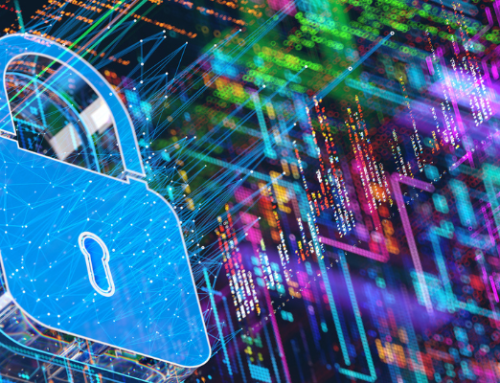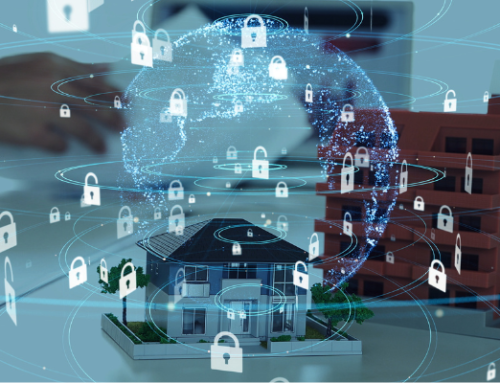In a digitally connected world, nonprofits rely heavily on donor data to advance their missions. Fundraising campaigns, volunteer coordination, and development efforts all revolve around collecting and using donor information. Yet, as technology expands opportunities to connect with supporters, it also introduces heightened security risks. Cybercriminals now target nonprofit organizations with tactics ranging from hacking to social engineering, often exploiting limited budgets and outdated systems. These challenges emphasize the importance of safeguarding donor data to preserve trust, protect financial assets, and maintain compliance with regulations.
Failing to safeguard donor data can lead to devastating consequences. Beyond the obvious financial impact of fraudulent transactions or stolen funds, a data breach can seriously damage an organization’s credibility, hampering its ability to attract future donors. There are also legal and regulatory obligations—such as those set by data privacy laws—that nonprofits must address to avoid fines and penalties. These realities underline why protecting donor information is paramount. By taking a proactive stance on cybersecurity, nonprofits can keep donor confidence high, ensure long-term sustainability, and continue to make a positive impact.
Article Highlights:
- Common Cybersecurity Threats Facing Nonprofits
- Classifying and Retaining Donor Data
- Securing Online Giving Platforms
- Building a Robust IT Infrastructure
- Staff and Volunteer Training
- Regular Audits and Financial Checks
- Developing an Incident Response Plan
Common Cybersecurity Threats Facing Nonprofits
Nonprofits contend with many of the same threats as for-profit organizations, but scarce resources and older technology infrastructures can make them particularly vulnerable. Criminals may see an easier opportunity for infiltration and data theft, given that smaller organizations often have leaner technology budgets or fewer cybersecurity controls. These factors make it critical for nonprofits to understand the range of threats lurking in the digital space.
Hacking and data breaches remain a high-risk concern. Attackers can leverage weaknesses in software, such as outdated patches or unprotected login credentials, to gain unauthorized access to systems. These intrusions can expose donor payment information, personal contact details, and other confidential records. Ransomware attacks are another major hazard. In these situations, cybercriminals use malicious software to encrypt vital files and hold them hostage for a ransom payment. If an organization’s systems are locked, it may be forced offline, unable to provide essential services or process donations—both dire scenarios for a mission-driven entity.
Social engineering and phishing threats have also grown more sophisticated. Fraudulent emails, text messages, and phone calls often trick staff or volunteers into handing over passwords or confidential details. Because nonprofits work with a wide array of volunteers, supporters, and partner institutions, it’s easy for small missteps to occur. Recognizing signs of suspicious communications is essential to guarding donor data from malicious actors.
Classifying and Retaining Donor Data
An important first step in any data security strategy is determining what information is collected and how it should be managed. Nonprofits frequently gather a broad range of details about donors, such as names, addresses, credit card numbers, giving histories, and communications preferences. Having a complete understanding of which data is stored, how it is used, and its level of sensitivity is fundamental to deciding on the degree of protection needed.
By defining a clear data classification policy, nonprofits can separate highly sensitive items—like payment card details—from less critical data. Once categorized, policies can outline handling procedures, including how and where the data is stored and who is permitted to access it. In the event of an attack, attackers cannot exploit what organizations do not keep. Therefore, establishing data retention policies and regularly discarding unnecessary information can lessen the volume of data at risk.
Minimizing unnecessary data also streamlines compliance with privacy regulations and appeases donor concerns. Though organizations may wish to retain robust donor profiles for strategic purposes, they must balance analytics needs against the security and privacy risks of holding large volumes of sensitive information.
Securing Online Giving Platforms
Online giving tools have streamlined fundraising, allowing donors to contribute quickly and conveniently. Yet these platforms also require strong security measures to keep donation transactions safe. When assessing an online giving solution, nonprofits should pay attention to more than just convenience. Industry-standard encryption protocols and adherence to payment card compliance frameworks provide a baseline level of assurance. Platforms with established reputations and glowing reviews from credible nonprofit users further signal reliability.
As an extra precaution, implementing multi-factor authentication (MFA) is enormously beneficial. MFA goes beyond simple passwords, requiring an additional code—often sent via text or a secure app—before system entry is granted. This added layer makes it harder for cybercriminals to hijack staff or administrator accounts. Another proven safeguard is to actively monitor transactions. Pay attention to large, unusual donations or repetitive giving patterns that might indicate fraud. Setting up system or email alerts prevents questionable transactions from going unnoticed.
Finally, maintaining current software is essential no matter which platform is in use. This includes keeping up with security patches and ensuring third-party plugins are updated. Regular checks for patches help address newly discovered vulnerabilities that cybercriminals might otherwise exploit.
Building a Robust IT Infrastructure
A sturdy IT foundation underpins all cybersecurity efforts. Many nonprofits rely on outdated or legacy systems due to limited budgets. However, unpatched software and unsupported operating systems can leave glaring gaps that attackers quickly exploit. Identifying and replacing these older technologies is crucial for staying secure.
Upgrading to cloud-based solutions often benefits nonprofits by providing advanced, built-in security controls and the ability to scale as organizational needs evolve. Cloud providers typically release frequent updates and maintain robust security features that might be too expensive or time-consuming for a nonprofit to manage alone. Keep in mind that cloud services are not a “set and forget” option—ongoing monitoring and internal security procedures are always necessary.
Attentive management of access controls also strengthens infrastructure defenses. Role-based access ensures staff can only see donor or operational data relevant to their specific responsibilities. By reviewing privileges routinely, nonprofits reduce the possibility of unauthorized access through dormant or unnecessary accounts.
Staff and Volunteer Training
Even the best technical controls can be undone by a single innocent mistake. Cybercriminals capitalize on human error, outperforming technology if people are uninformed or complacent. Training programs help staff and volunteers understand red flags, such as phishing links or requests for personal details, and reinforce the importance of strong passwords. These sessions should be frequent enough to reflect new tactics used by criminals, as they often adapt to bypass common security education.
Organizations should also emphasize data privacy practices. Volunteers, employees, and even short-term contractors must know how to properly handle and store confidential donor information. Establishing clear guidelines for promptly reporting suspicious incidents—a misdirected email to a volunteer, for instance—enables the organization’s leadership to address small puzzles before they become large-scale breaches.
Regular Audits and Financial Checks
An often-overlooked component of data security involves routine financial audits and transaction verifications. By comparing donation records against bank statements, nonprofits can quickly catch unauthorized transactions or anomalies, such as inconsistencies between amounts posted online and totals deposited. Taking time to verify that funds have correctly transferred from an online giving platform to the organization’s bank account keeps potential fraud in check.
Beyond financial statements, in-depth monitoring of system logs for irregularities can reveal unusual login attempts or abrupt spikes in donor records access. Executing both internal and external penetration tests provides insight into weak points, offering an opportunity to address vulnerabilities before a malicious entity does.
Developing an Incident Response Plan
Even the most diligently protected organization may face a cybersecurity incident. An effective incident response plan can reduce damage, guide decision-making, and help restore operations as quickly as possible. Such a plan outlines communications protocols—deciding who within the nonprofit should be alerted first and determining which team manages donor notifications if a breach occurs. Drawing up these guidelines in advance reduces confusion and delays under stressful circumstances.
The plan should also detail how and when donors will be informed of any compromise, ensuring a transparent and timely approach. Consulting legal counsel, insurers, and cybersecurity experts can help management assess the severity of potential breaches and follow all required disclosure protocols. Once the situation is contained, the organization can move toward recovery, leaning on thorough data backups and restoration practices that allow operations to resume with minimal downtime. Post-incident evaluations drive improvements, reinforcing the organization’s resilience for the future.
Advancing the Mission with Proven Cybersecurity Strategies
Nonprofits can only thrive when they have the trust of donors, volunteers, and community partners—and that trust relies on safeguarding sensitive donor data. Proactive cybersecurity measures, regular software updates, and robust infrastructure form the backbone of a strong defense. Equally important are forward-thinking strategies, such as classifying and retaining only the data you need, training staff to recognize threats, and establishing thorough incident response plans.
Staying vigilant against emerging threats is an ongoing task, but nonprofits need not face this challenge alone. Collaboration with experienced professionals, whether through managed IT services, cybersecurity assessments, or targeted training—can help fill resource gaps and fortify defenses. By continuously refining security processes and investing in the right systems, nonprofits ensure a safer digital environment for every donor. The resulting confidence fosters lasting relationships, enabling organizations to focus on what matters most: advancing their missions and serving the communities they support.
If you have any questions or would like to learn more, please contact PBMares Not-for-Profit Partner Bo Garner or Risk Advisory Partner Antonina McAvoy.






